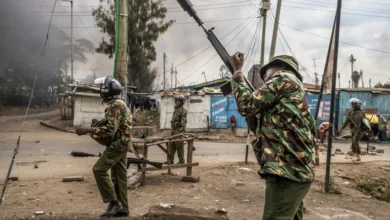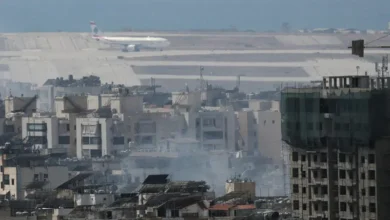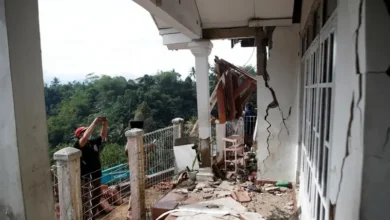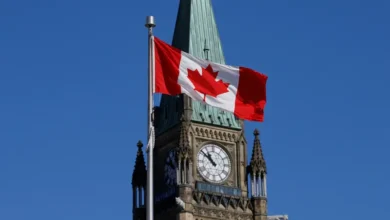Why Nawaz Sharif failed to win Pakistan election despite tacit army support
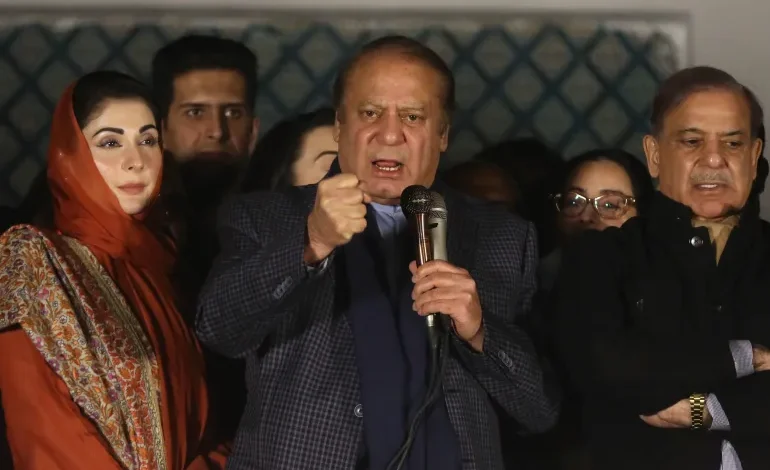
When Nawaz Sharif, the three-time former prime minister, emerged on the balcony of his party’s headquarters in Lahore on Friday night, fireworks went off as he was given a rousing welcome by the crowd of nearly 1,500 people.
Sharif started out with what has now become the staple of his public addresses, asking the crowd of his Pakistan Muslim League Nawaz (PMLN) supporters, “Do you love me?”. The response, “We love you!”, echoed among his adoring audience.
Yet, more than three days after Pakistan voted in general elections, there is little evidence that the sentiment of Sharif’s core supporters is shared by the wider public in the nation of 241 million people that stunned analysts in their voting patterns on February 8.
For weeks before the elections, the PMLN was viewed by experts as the favourite to secure a clear victory that would give the 74-year-old political veteran another chance to rule Pakistan. Once targeted by Pakistan’s military establishment, Sharif appeared to have won the favour of the generals for the 2024 vote.
So confident were Sharif and the PMLN of their win that they had scheduled a victory speech from their leader for Thursday night, barely hours after polls closed. Then, the results started coming in, and the bubble was burst.
“As the voting patterns emerged, it shocked and surprised the party, forcing a rethink which is why they were in complete silent mode for nearly 12 hours,” said Majid Nizami, a political analyst, and a specialist on elections.
When Sharif finally addressed supporters on Friday, he claimed victory, but acknowledged that his party had failed to secure a simple majority and so would need coalition partners to form a government.
“This was not the result the party was expecting. They thought they would achieve more than 85 percent of seats from Punjab province, but initial trends showed they were barely getting 50 percent of seats,” Lahore-based Nizami told Al Jazeera.
Almost all of the remaining seats in Punjab, the bastion of Sharif’s PMLN, went to candidates backed by former PM Imran Khan’s Pakistan Tehreek-e-Insaaf (PTI) — a party that experts believed had been decimated by targeted political and legal attacks in recent months.
What went wrong?
As the dust settles on the election results, the PMLN has emerged with 75 seats in the national assembly, trailing PTI-backed independent candidates by 20 seats.
The PTI alleges widespread manipulation and tampering, insisting that it has been denied a far larger majority and that their mandate has been “stolen” to benefit Sharif and his PMLN.
So, what happened to the PMLN, a party that, as late as early 2022, was leading opinion polls in popularity over PTI and was considered the strongest party in Punjab, Pakistan’s most populous and electorally important province?
For Lahore-based political analyst and editor Badar Alam, the roots of PMLN’s disappointing performance in the polls can be traced back to April 2022 when Imran Khan, the PTI chief, and then-prime minister were ousted through a parliamentary vote of no-confidence.
At the time, Sharif was in self-imposed exile in the United Kingdom, after a series of corruption-related convictions. His party allied with the country’s other traditional political force, the Pakistan People’s Party (PPP) and others under what was called the Pakistan Democratic Movement (PDM), to topple Khan’s government.
They succeeded. But, said Alam, “once Shehbaz Sharif, Nawaz’s younger brother, took over as prime minister, his attention went towards removing all the cases and convictions against his elder brother.”
These are cases that have haunted the Sharif brothers for three decades. The elder Sharif, who ruled the country twice in the 1990s, has been dogged by corruption allegations since then. In 1999, he was ousted in a military coup. His third term in power, after the PMLN won the 2013 elections, was marked by intensifying rivalry with Khan, who eventually won the 2018 election, backed at the time by Pakistan’s powerful military establishment that has ruled the country directly for more than three decades and has influenced politics from behind the scenes for much of the rest of the country’s existence.
Yet, since relations between Khan and the military soured, and he was ousted in 2022 — with the military now seemingly backing the PDM government — Pakistan has been through torrid political, economic and security crises.
Salman Ghani, a political analyst who has been covering the PMLN for a long time, said that as the leading party of the PDM, the decisions of that government hung heavy around the Sharif brothers’ necks.
“The 16-month rule of PDM caused almost irreversible damage to the PMLN. The tenure saw massive inflation, hitting the public everywhere, including their own vote bank,” Ghani told Al Jazeera. “Theirs is a party of development and the economy; people support them for delivery, not for ideology. That perception was destroyed in that time.”
Pakistan was on the verge of defaulting on loans last year, with its foreign reserves depleting to less than $4 billion dollars, and its rupee depreciating rapidly against the US dollar. A $3 billion loan from the International Monetary Fund helped stave off a default temporarily.

